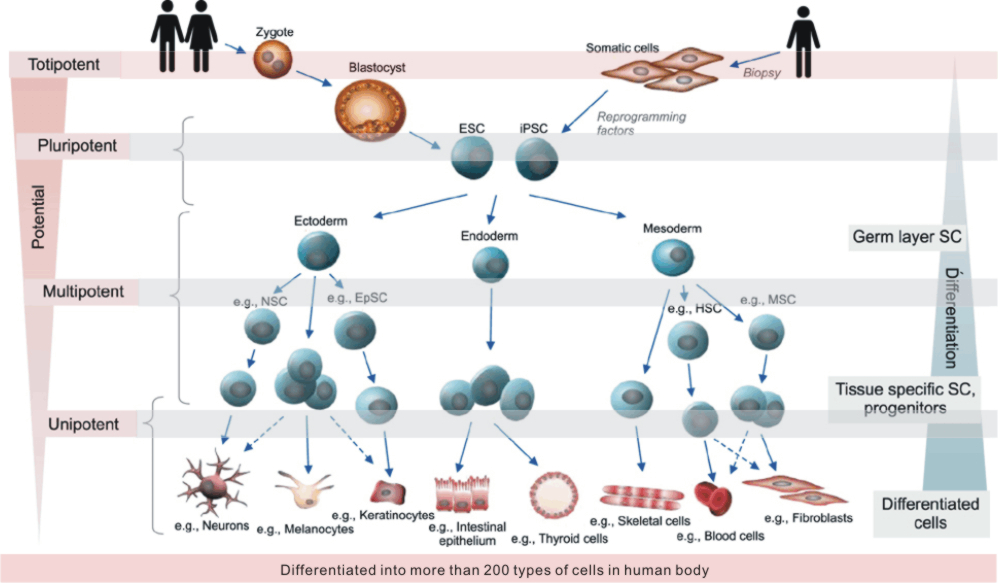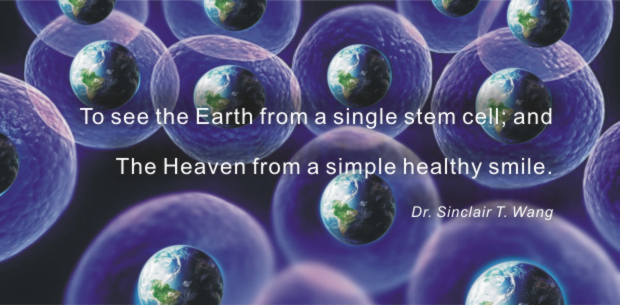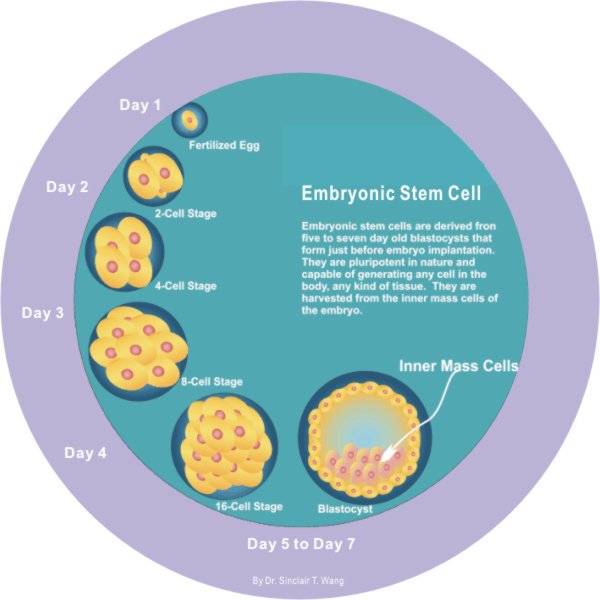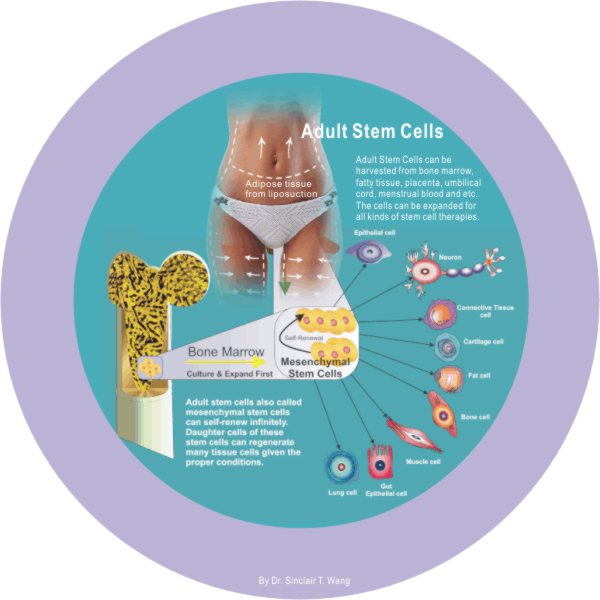
Introduction to Stem Cells |
||||
|---|---|---|---|---|
| Generally speaking, “stem cells” are used to treat disease or repair damaged tissue, to understand disease processes and for drug discovery. They are able to be used for these purposes because they belong to a special group of cells that are capable of differentiation. This means that they can form any of the more than 200 different cell types found in our bodies. | ||||
 |
||||
Different kinds of stem cells |
||||
Although not a stem cell per se, the fertilized egg creates all the cells that make up the embryo and the placenta. There are two types of stem cells: pluripotent and adult stem cells.
|
||||
What can stem cells be used for? |
||||
Adult stem cells have been used for more than five decades to treat certain blood cancers and genetic or immunological disorders. Known as bone marrow or hematopoietic stem cell transplantation, this procedure replaces the normal stem cells in a patient’s body that have been destroyed by high dose chemotherapy.
|
||||
Why are stem cells controversial? |
||||
More than 90% of the work involving stem cells is not controversial. This includes the therapies that are legitimately administered every day as well as most of the research work being done in many parts of the world.
|
|
 |
| CONTACT INFO | QUICK LINKS | LEGAL INFO | |
| Home | |||
| info@wscan.org | About Us | Terms & Condition | |
| Address: 2F, No. 157, Kang Ning St. | Stem Cells | Privacy | |
| Xizhi Dist, New Taipei City, Taiwn | Global Networks | ||
| Phone: 886-2-26949742 | Clinical News | ||
| Fax: 886-2-2694-9743 | Global Warnings | ||
| Contact Page | Membership | FOLLOW US | |
| Contact Us |
|
*Disclaimer: All information presented through this web site has not been evaluated by USFDA or whichever governing agency worldwide,and is not intended to diagnose,
treat, cure or prevent any disease.
© All rights reserved by The World Stem Cell Application Network (WSCAN), A nonprofit organization. 2019

